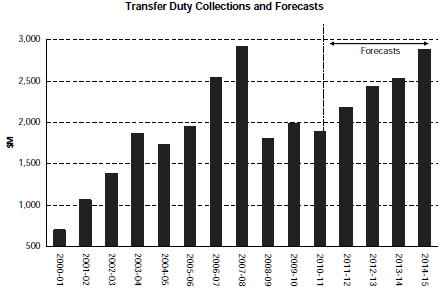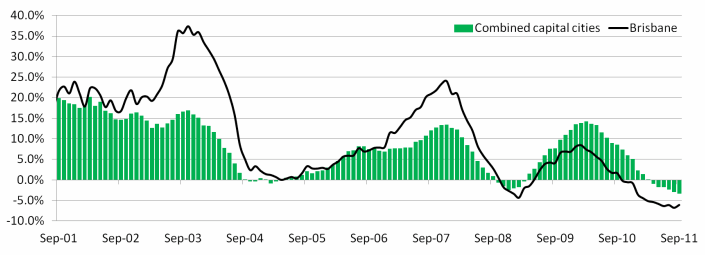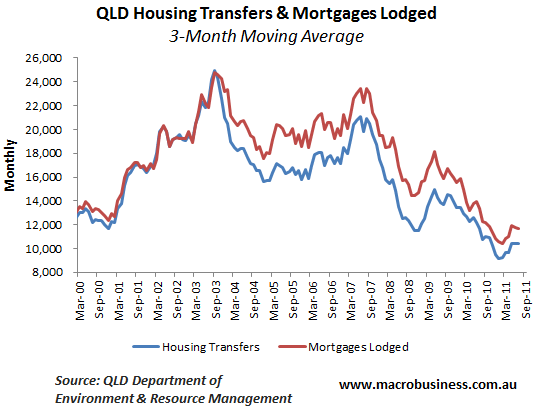Following last weeks article, WA Budget’s housing black hole, readeramdweb82 requested that I undertake a similar analysis of Queensland’s (QLD) budgetary situation to gauge whether it is experiencing similar pressures to WA from falling home prices and lower housing transactions.
Thanks to an anonymous reader, who emailed me the data set, I now possess reliable transactions data for QLD, which has enabled me to undertake this analysis.
First up, consider the below chart, extracted from the latest QLD State Government Budget, showing the rapid rise and fall of property-related stamp duty revenues.

Throughout most of the 2000s, the QLD Government rode on the back of the housing market, where stamp duty receipts rose four-fold from around $700m in 2000-01 to around $2.8 billion in 2007-08. However, in the wake of the global financial crisis, stamp duty receipts plummeted and remain around $1 billion lower than their peak level reached in 2007-08.
In its latest Budget, the QLD Government forecast that the housing market will recover gradually, leading to a steady increase in stamp duty receipts back towards their 2007-08 peak by 2014-15.
However, the data flow since the release of the Budget in June has worsened, casting doubt on the Government’s forecasts.
First, Brisbane housing prices have continued to fall, and are now down 6.1% over the past 12-months:

To add insult to injury, both housing transfers and mortgages lodged remain near decade lows:

As long as home prices, transaction volumes, and mortgage commitments remain depressed, QLD Budget revenues will remain under pressure.
Once again, Queensland highlights why it is risky for a government to pin its financial well being on an inefficient, volatile transactions-based tax like stamp duty, instead of more efficient, equitable and stable sources like broad-based land value taxes.

